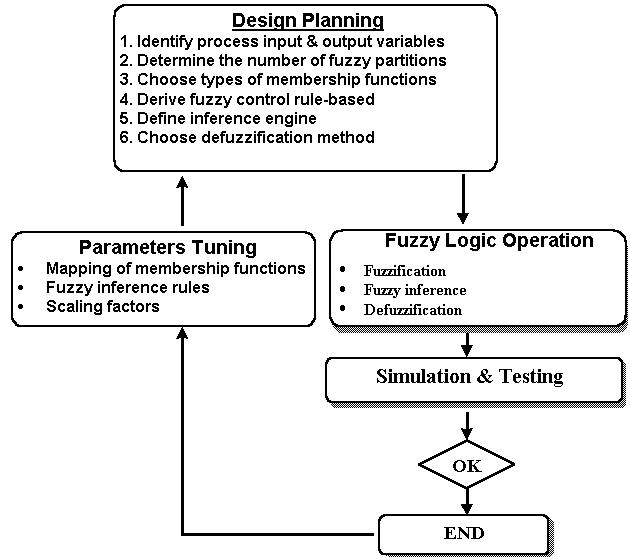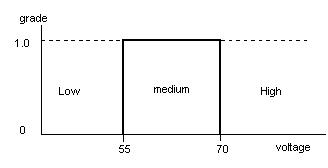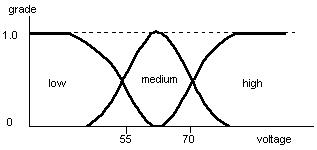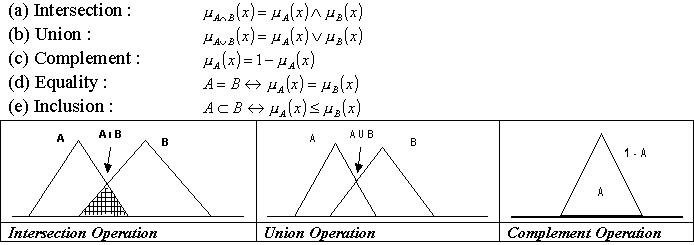
An Overview
Artificial Intelligence
(AI) is the area of computer science focusing on creating machines that
can engage on behaviors that humans consider intelligent. The ability to
create intelligent machines has intrigued humans since ancient times, and
today with the advent of the computer and 50 years of research into AI
programming techniques, the dream of smart machines is becoming a reality.
Researchers are creating systems which can mimic human thought, understand
speech, beat the best human chessplayer, and countless other feats never
before possible. Find out how the military is applying AI logic to its
hi-tech systems, and how in the near future Artificial Intelligence may
impact our lives.
It is not my aim to suprise
or shock you--but the simplest way I can summarize is to say that there
are now in the world machines that can think, that can learn and that can
create. Moreover, their ability to do these things is going to increase
rapidly until--in a visible future--the range of problems they can handle
will be coextensive with the range to which the human mind has been applied.
--Herbert Simon
|
Artificial
Neural Networks
|
|
Also
referred to as connectionist architectures, parallel distributed processing,
and neuromorphic systems, an artificial neural network (ANN) is an information-processing
paradigm inspired by the way the densely interconnected, parallel structure
of the mammalian brain processes information. Artificial neural networks
are collections of mathematical models that emulate some of the observed
properties of biological nervous systems and draw on the analogies of adaptive
biological learning. The key element of the ANN paradigm is the novel structure
of the information processing system. It is composed of a large number
of highly interconnected processing elements that are analogous to neurons
and are tied together with weighted connections that are analogous to synapses. |
|
|
|
Learning
in biological systems involves adjustments to the synaptic connections
that exist between the neurons. This is true of ANNs as well. Learning
typically occurs by example through training, or exposure to a truthed
set of input/output data where the training algorithm iteratively adjusts
the connection weights (synapses). These connection weights store the knowledge
necessary to solve specific problems. |
|
|
|
Although
ANNs have been around since the late 1950's, it wasn't until the mid-1980's
that algorithms became sophisticated enough for general applications. Today
ANNs are being applied to an increasing number of real- world problems
of considerable complexity. They are good pattern recognition engines and
robust classifiers, with the ability to generalize in making decisions
about imprecise input data. They offer ideal solutions to a variety of
classification problems such as speech, character and signal recognition,
as well as functional prediction and system modeling where the physical
processes are not understood or are highly complex. ANNs may also be applied
to control problems, where the input variables are measurements used to
drive an output actuator, and the network learns the control function.
The advantage of ANNs lies in their resilience against distortions in the
input data and their capability of learning. They are often good at solving
problems that are too complex for conventional technologies (e.g., problems
that do not have an algorithmic solution or for which an algorithmic solution
is too complex to be found) and are often well suited to problems that
people are good at solving, but for which traditional methods are not. |
|
|
|
There
are multitudes of different types of ANNs. Some of the more popular include
the multilayer perceptron which is generally trained with the backpropagation
of error algorithm, learning vector quantization, radial basis function,
Hopfield, and Kohonen, to name a few. Some ANNs are classified as feedforward
while others are recurrent (i.e., implement feedback) depending on how
data is processed through the network. Another way of classifying ANN types
is by their method of learning (or training), as some ANNs employ supervised
training while others are referred to as unsupervised or self-organizing.
Supervised training is analogous to a student guided by an instructor.
Unsupervised algorithms essentially perform clustering of the data into
similar groups based on the measured attributes or features serving as
inputs to the algorithms. This is analogous to a student who derives the
lesson totally on his or her own. ANNs can be implemented in software or
in specialized hardware. |
|
|
|
Artificial
Neural Networks Applications
|
|
|
Classification |
|
Business |
|
· Credit rating and risk assessment,
Insurance risk evaluation, Fraud detection |
|
· Insider dealing detection, Marketing
analysis, Mailshot profiling |
|
· Signature verification, Inventory
control |
|
Engineering |
|
· Machinery defect diagnosis, Signal
processing, Character recognition |
|
· Process supervision, Process fault
analysis, Speech recognition |
|
· Machine vision, Speech
recognition, Radar signal classification |
|
Security |
|
· Face recognition, Speaker verification,
Fingerprint analysis |
|
Medicine |
|
· General diagnosis, Detection of
heart defects |
|
Science |
|
· Recognising genes, Botanical classification,
Bacteria identification |
|
|
· Modelling |
|
Business |
|
· Prediction of share and commodity
prices, .Prediction of economic indicators |
|
Engineering |
|
· Transducer linearisation, Colour
discrimination, Robot control and navigation |
|
· Process control, Aircraft landing
control, Car active suspension control |
|
· Printed Circuit auto routing, Integrated
circuit layout, Image compression |
|
Science |
|
· Prediction of the performance of
drugs from the molecular structure. |
|
· Weather prediction, Sunspot prediction |
|
Medicine |
|
· Medical imaging and image processing |
|
|
Forecasting |
|
- Future Sales, Production Requirements,
Market Performance |
|
- Economic Indicators, Energy Requirements,
Time Based Variables. |
|
|
Novelty Detection |
|
- Fault Monitoring, Performance Monitoring,
Fraud Detection, |
|
- Detecting Rare Features |
|
- Different Cases. |
|
|
|
Who
needs Artificial Neural Networks?
|
|
People who have to work with or analyse data
in any form. People who in business, finance, or industry and whose problems
are either complex , laborious, 'fuzzy' or simply un-resolvable with present
methods. People who simply want to improve on their current techniques
and gain competitive advantage. |
|
Why are they the best method for data analysis?
|
|
Neural networks outperform current methods
of analysis because they can successfully |
|
|
Deal with the non-linearities of the world
we live in |
|
|
Be developed from data without an initial
system model |
|
|
Handle noisy or irregular data from the real
world |
|
|
Quickly provide answers to complex issues |
|
|
Be easily and quickly updated |
|
|
Interpret information from tens or even hundreds
of variables or parameters |
|
|
Readily provide generalised solutions |
|
What are the main types of neural network learning ?
|
|
There exist two primary types of neural network
learning: supervised and unsupervised . |
|
Supervised Learning |
|
Supervised learning is a process of training
a neural network by giving it examples of the task we want it to learn.
I.e., learning with a teacher. The way this is done is by providing a set
of pairs of vectors (patterns), where the first pattern of each pair is
an example of an input pattern that the network might have to process and
the second pattern is the output pattern that the network should produce
for that input which is known as a target output pattern for whatever
input pattern. This technique is mostly applied to feed forward type of
neural networks. |
|
For more detailed information click here
on supervised
learning |
|
Unsupervised
Learning |
|
Unsupervised learning is a process when the
network is able to discover statistical regularities in its input space
and automatically develops different modes of behaviour to represent different
classes of inputs (in practical applications some 'labelling' is required
after training, since it is not known at the outset which mode of behaviour
will be associated with a given input class). Kohonen's self-organising
(topographic) map neural networks use this type of learning. |
|
We have to bear in mind that neural networks
learning process is about changing the state of connectivities. Some algorithms
(most of them) involve changing the weights of the connections. However,
other ones involve adding and retrieving connections as well as changing
their weights values. |
|
For more detailed information click here
on unsupervised
learning |
|
|
|
Artificial
Neural Networks Resources |
| PDP |
The PDP simulator
package comes with McClelland and Rumelhart's book"Explorations in Parallel
Distributed Processing"
PC and UNIX
platform.
The latest
version is available from ftp.nic.funet.fi. |
|
|
Neuro
Solutions |
A neural network
simulator which combines a graphical design interface with advanced learning
procedures, such as recurrent backpropagation and backpropagation through
time. Notable features include C++ code generation, user-defined algorithms
and integration with Excel. Free evaluation copy available for download.
Windows 95/98/NT
platform
www.nd.com/download.htm
www.nd.com/products/nsv3.htm |
|
|
| Mactivation |
A Neural network
simulation system.
Macintosh platform
The latest
version is available from ftp.cs.colorado. |
|
|
| NeurDS |
Supports various
type of networks.
DEC systems.
The latest
version is available from ftp.gatekeeper.dec.com |
|
|
Rochester
Connectionist
Simulator |
A simulator
program for arbitrary types of neural nets. Comes with a backprop package
and a X11/Sunview interface.
Sun platform
The latest
version is available from ftp.cs.rochester.edu.
Additional
information is available from ftp.cs.rochester.edu. |
|
|
| Xerion |
This package
includes simulations of backpropagation, Boltzmann Machine and Kohonen
Networks.
SUN platform
The latest
version is available from ftp.cs.toronto.edu.
Additional
information is available from ftp.cs.toronto.edu. |
|
|
| Attrasoft |
A lot of ANN
applications including Stock Prediction, Business Decision, Medical Decision.
http://attrasoft.com/ |
|
|
AI
Information
Bank |
This page is
part of the AI Information Bank / AI Intelligence Web site.
http://aiintelligence.com/aii-info/techs/nn.htm |
Fuzzy
Logic
Fuzzy Logic is a form
of logic used in some expert systems and other artificial-intelligence
applications in which variables can have degrees of truthfulness or falsehood
represented by a range of values between 1 (true) and 0 (false). With fuzzy
logic, the outcome of an operation can be expressed as a probability rather
than as a certainty. For example, in addition to being either true or false,
an outcome might have such meanings as probably true, possibly true, possibly
false, and probably false. The design of fuzzy logic controller will base
on the methodology as shown below.

Fuzzy Sets
The very
basic notion of fuzzy systems is a Fuzzy (sub)set. In classical mathematics
we are familiar with what we call crisp sets. A classical set may be defined
as by crisp boundaries where the boundary of a crisp set is an unambiguous
line. However, fuzzy set is a set without crisp that clearly defined the
boundary. Therefore, a fuzzy set can contain elements with only a partial
degree of the set.
In classical
set theory, a subset U of a set S can be defined as a mapping from the
elements of S to the elements of the set {0, 1}, U: S
--> {0, 1}
This
mapping may be represented as a set of ordered pairs, with exactly one
ordered pair present for each element of S. The first element of the ordered
pair is an element of the set S, and the second element is an element of
the set {0, 1}. The value zero is used to represent non-membership,
and the value one is used to represent membership. The truth or falsity
of the statement "x is in U" is determined by finding the ordered pair
whose first element is x. The statement is true if the second element
of the ordered pair is 1, and the statement is false if it is 0.
Similarly,
a fuzzy subset F of a set S can be defined as a set of ordered pairs, each
with the first element from S, and the second element from the interval
[0,1], with exactly one ordered pair present for each element of S. This
defines a mapping between elements of the set S and values in the interval
[0,1]. The value zero is used to represent complete non-membership,
the value one is used to represent complete membership, and values in between
are used to represent intermediate Degrees of Membership. The set
S is referred to as the Universe of Discourse for the fuzzy subset F.
Frequently, the mapping is described as a function, the Membership Function
of F. The degree to which the statement " x is in F" is true is determined
by finding the ordered pair whose first element is x. The Degree
of Truth of the statement is the second element of the ordered pair. In
practice, the terms "membership function" and fuzzy subset get used interchangeably.

Crisp
Sets |

Fuzzy
sets of low, medium and high |
Operations of the
Fuzzy Set
The five
basic operators for fuzzy sets are intersection or conjunction (AND), union
or disjunction (OR), complement (NOT), inclusion and equality. Let A and
B be fuzzy subsets of X and below are the definition of these operators
performed on fuzzy sets.

Linguistic Variables
Fuzzy
logic is a powerful problem-solving methodology that can transform or model
the uncertainty of natural language or vague concepts such as "very hot",
"slightly", "quite slow", "low" and "rather warm" into a mathematical form
which is then process by computers to solve and perform problem-solving
actions. This problem-solving methodology allows computers to perform nearly
like a human being's ability to think and reason.
Membership Functions
A membership
function (MF) is a curve that characterized the fuzziness in a fuzzy set
in a graphical form that defines how instant input is mapped to the grade.
The crisp input is called as universe of discourse. If X is the universe
of discourse and its elements are denoted by x, then a fuzzy set A in X
is defined as a set of ordered pairs:
A = {x, mA(x)
| x Î X}. mA(x)
is called the membership function of x in A. The membership function maps
each element of X to a membership value between 0 and 1.
The membership
functions which are often used in practice include triangular, trapezoidal,
gaussian, sigmoidal, p, S and Z membership functions.
Fuzzy
Rules
Fuzzy
rules are a set of conditional statements as shown below:
IF x is big THEN y is small
Fuzzy
control rules are characterised by a collection of fuzzy IF-THEN rules
which the antecedents and consequent involve linguistic variables. This
collection of fuzzy control rules characterises the simple input-output
relation of the system. The general form of the fuzzy control rules in
the case of multi-input single output system (MISO) is " Ri : IF x is Ai,
…, AND y is Bi, THEN z = Ci, i = 1,2,…,n"
where
x,…,y and z are linguistic variables representing the process state variables
and the control variables. Ai,…,Bi and Ci are linguistic values of linguistic
variables x,…,y and z in the universes of discourse U,…,V and W, respectively.
To
interpret the above fuzzy if-then rule, it involves two processes. The
first process is to evaluate the antecedent which involves fuzzification
to change a crisp input value to a degree of membership between 0 and 1.
If the antecedent only consists of one fuzzy variable then this degree
is the degree of support for the rule. If there are multiple fuzzy variables
in antecedent, fuzzy operators is applied to obtain a single degree. The
second process is the application of implication method in the consequent
of the rule. If the antecedent is partially truth then the output fuzzy
set in consequent is truncated according to the implicated method.
Fuzzy
Inference
For application
of approximate reasoning in fuzzy logic control, the generalised modules
can be written as below:
Premise
1 : IF x is A, THEN y is B.
Premise
2 : x is A`
Conclusion
: y is B`
where
A, A`, B, B` are fuzzy sets in the universal sets U, U, V and V respectively.
There
are four types of compositional operators that can be used in the compositional
rule of inference:
·
Max-min operation
·
Max-product operation
·
Max bounded product operation
·
Max drastic product operation
In fuzzy
control application, Max-min and Max-product composition operations are
the most commonly used due to their computational simplicity and efficiency.
|
Fuzzy
Logic Resources |

|
A complete aceess to
Fuzzy Logic knowledge.... |
 |
This web server comprises
a complete repository for Fuzzy Logic and NeuroFuzzy applications. It contains
free simulation software, case studies, and product information. |
 |
Find out more about
our pioneering technologies for the web.
This web provides the
current and future direction for business. |
Genetic
Algorithm
The following
was extracted from: Genetic Algorithms and Artificial Neural Networks
A talk
presented to the Fort Worth, Texas chapter of the Association for Computing
Machinery, Spring 1988
Copyright
1988, 1992 by Wesley R. Elsberry
What
is a genetic algorithm?
A genetic
algorithm is an iterative search technique premised on the principles of
natural selection.
A genetic
algorithm is an implementation of a search technique which locates local
maxima. Is it a state-space search or does it search surfaces? It does
both.
What
use is a genetic algorithm?
In searching
a large state-space, multi-modal state-space, or n-dimensional surface,
a genetic algorithm may offer significant benefits over more typical search
or optimization techniques (linear programming, heuristic, depth-first,
breadth- first, praxis, DFP [De Jong, 80]). Of course, 'boy-with-a- hammer'
syndrome should be avoided.
Genetic
algorithm components
a goal
condition or function
a group
of candidate structures (bit-maps, messages, weights, etc.)
an evaluation
function which measures how well the candidates achieve the goal condition
or function reproduction function (takes current candidates and reproduces
them with some amount of variance)
Genetic
Algorithm Sequence of Events
repeat
1.evaluate current candidates
2.develop new candidates via reproduction with modification which replace
least-fit former candidates
until
satisfied (where 'satisfied' indicates that the goal condition has been
met, or that some failure condition is triggered, or never. 'Repeat forever'
would be useful for adaptive systems.)
Why
does this work?
competition for system resources
heritability of variance
How
does this work? Example [from Smith, 88]:
State
goal condition as finding binary string of length 5 with (4) 1's
Randomly
generate L5 strings (length five), population size of 5
00010
(eval: 1)
10001
(eval: 2)
10000
(eval: 1)
01011
(eval: 3)
10010
(eval: 2)
Population
evaluation average: 1.8
To find
next generation, reproduce from this candidate population with modification.
Modification method is defined as 'crossover', as in sexual reproduction.
Modification
methods thus far proposed for GA's:
1.crossover - interchanges strings at random point
2.inversion - generates new schemata by flipping substring
3.mutation - point mutation
Reproductive
function semi-randomly selects pairs of candidate strings for production
of new candidates. A random number is generated and applied to a selectionist
distribution of candidate strings.
Selectionist
distribution:
1 00010
(eval: 1)
2 10001
(eval: 2)
3 10001
(repeat since fitness is higher)
4 10000
(eval: 1)
5 01011
(eval: 3)
6 01011
(repeat)
7 01011
(repeat)
8 10010
(eval: 2)
9 10010
(repeat)
Select
pairs (indices from selectionist distribution):
1 &
4 Then crossover point: 1
4 &
5 4
9 &
7 3
8 &
6 1
7 &
5 1
Result
from :
1+4:1
= 00000 (eval: 0)
4+5:4
= 10001 (eval: 2)
9+7:3
= 10011 (eval: 3)
8+6:1
= 11011 (eval: 4)
7+5:1
= 01011 (eval: 3)
New population
evaluation average: 2.4
The goal
condition has now been satisfied, and the procedure ends.
How
well do GA's work?
Given
candidates which are binary strings:
Population
size N
Number
of generations G
We sample
NG points out of 2^l where l is binary string length
So
what?
This
can be done with random search methods
But GA's
develop a pool of genes
Search
is for 'schemas' which are 'blocks' or 'alleles' (portions of the binary
string which tend to be reproduced as a unit)
2^l schemas
per individual
N*2^l
schemas per population
What
applications can this be put to?
Accomplished: adaptive systems design, adaptive control,
finite automata specification, optimization problems (TSP [Brady,
85])
Projected:
parameter specification for neural networks
Problems:
How to specify a 'genetic' pattern for the application in mind?
Does it converge faster than learning procedures?
The example
brought up by Smith was that of specifying weights in a back-propagation
ANN. The question was raised as to whether the GA would show any advantage
over just going ahead and doing the typical training. Since training involves
the solving of sets of differential equations for each weight in the network,
repeated over multiple training iterations, it is expected that GA's would
produce significant time benefits. The GA does not require intensive computation,
so more time could be spent in the evaluation phase. The GA would be more
space-intensive, however, in order to maintain a 'population' of candidate
weights for the back-propagation ANN.
Background:
Genetic
algorithms are premised on the principles of natural selection in biology.
In searching for a solution state, a 'population' of candidate states are
generated, evaluated, selected, and reproduced with modification to produce
the next candidate population.
(BA ==
Biological analogue)
Structures
and modules needed:
candidate data structures (BA = organisms)
representation structure (BA = set of chromosomes)
evaluation function (BA = environment)
selection mechanism (BA = [too many to list])
reproduction mechanism (BA = genetics)
In biology,
the sequence of events works like this:
The organism
has a set of structures which help determine its internal organization
and capabilities. These are the genes, which in combination with environmental
factors during development specify the formation of structures and connections.
At maturity, the organism will have expressed a suite of characteristics
which enable it to survive in its environment and propagate itself. The
mode of reproduction which produces the most variance in the resulting
offspring is sexual reproduction, which mixes genes from separate individuals
to form the resulting offspring. Asexual reproduction is subject to variation
only through external disturbances, such as
radiation
induced mutation or viral transcription, which produce variations that
are small or relatively infrequent.
Various
expressed characteristics of an organism may make it less successful than
other organisms of the same species, where success is defined as 'differential
reproductive success', in other words, the organism leaves more related
offspring than those which do not demonstrate the same degree of adaptation.
The next generation of organisms then proceed through the same processes.
The expressed
characteristics of the organism are not necessarily the same characteristics
as those coded for in the genes of the organism. The actual set of gene
information is referred to as the genotype, while the expressed characteristics
of the organism is referred to as the phenotype. The difference between
code and expression can be a result of both the environmental factors and
the interaction between genes on a pair of chromosomes.
Why
genetic algorithms? Why, for that matter, neural networks? Both of
these active research fields are premised on aspects of biological phenomena.
Consider the complex problems which living systems must contend with in
order to survive. The highly diverse fauna currently living gives some
idea of the range of possible solutions to these problems. However, that
is not the entire picture. Consider the currently extant number of species
to be a small subset of instances in a far larger solution space.
The existing
species can be thought of as representing 'splotches' on the surface of
an expanding hypersphere. By no means do they represent the entire range
of possible solutions. These species are postulated to have arisen by the
process of natural selection.
Natural
selection provides a mechanism for the identification and propagation of
appropriate adaptation to specific and complex problems. Basically, natural
selection can be described cursorily in the following manner. Several conditions
are postulated.
a population of candidate entities
within this population, there is variation
some of these variations are heritable
the individuals of the population are capable of reproduction, either by
themselves or in conjunction with other individuals
the individuals within the population are constrained by the environment
stresses in the environment may prove debilitating or fatal to the individual
limitations on resources provided by the environment will prevent the unrestricted
propagation of individuals of the population
limitations induce competition between individuals of the population for
resources
individuals compete for basic resources:
elements or compounds necessary for basic processes of metabolism
elements, compounds, or structures which provide food
other individuals for the purpose of reproduction ( in sexual reproduction
)
a mechanism for the introduction of variation exists
within the context of DNA or RNA based heritability, point mutations may
occur through the action of radiation of suitable energy (gamma ray, X-ray,
UV light). For asexually reproducing species, this will be one of the major
sources of variation.
With these
postulated requirements, natural selection proceeds. The variation in individuals
will lead to differences in the success of individuals, where success is
defined to be differential reproductive success.
heritable
traits which confer differential success will tend to become more highly
represented in the population
heritable traits which are maladaptive will tend to become less well represented
in the population
Notice
that the selection process is not considered to 'favor' adaptive characteristics,
rather, relatively maladaptive or nonadaptive traits are 'selected' against.
Thus, natural selection can be considered to include a normalization procedure.
The variation which is present in the population is generally assumed to
arise at random. The selection process, however, is not random, but is
premised on relative functionality with reference to the absolute
constraints of the environment.
|
Genetic
Algorithm Resources |
 |
The Genetic Algorithms
Archive is a repository for information related to research in genetic
algorithms and other forms of evolutionary computation. |
 |
Enter here to view
the graphical version of the genetic algorithm |

Back To Top




